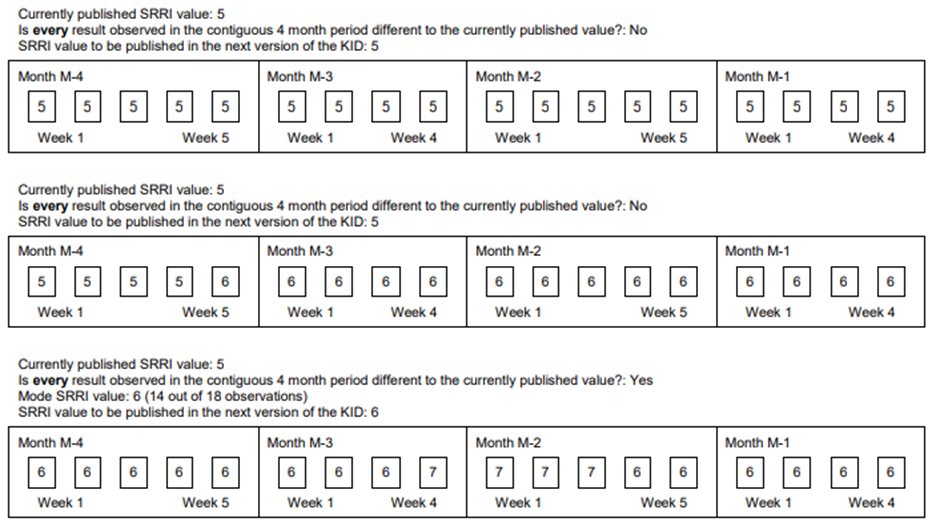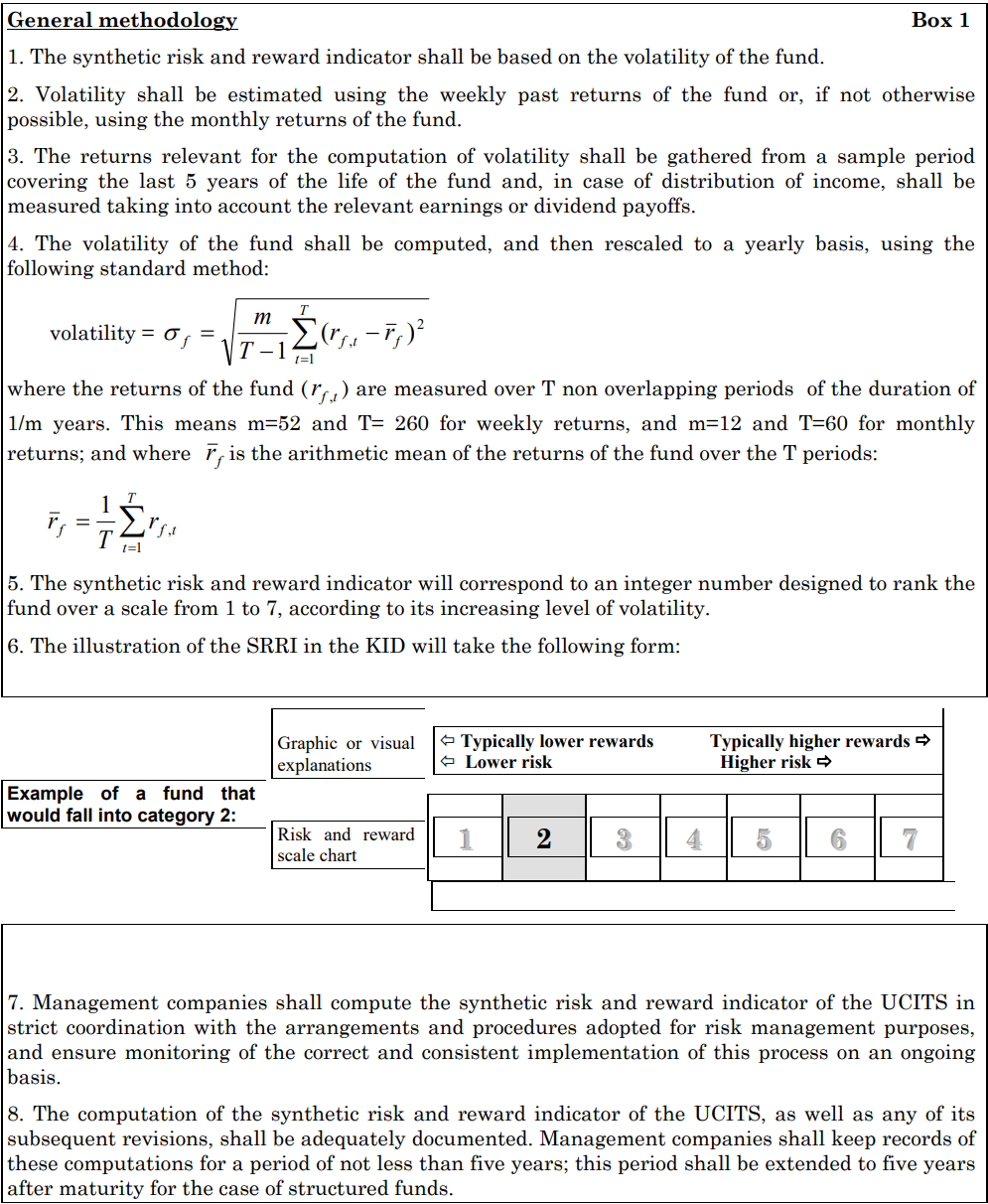The SRRI of a fund should be revised if it risk category has changed on each weekly or monthly data reference point over the preceding 4 months. This requirement applies also to those circumstances where the change of the risk and reward profile of the fund is linked to inadvertent changes in the overall market conditions in the segments that are relevant for the investment policies and/or strategies adopted by the UCITS.
Therefore, the SRRI of the fund should be monitored and controlled on an ongoing basis and, if any material change has occurred, the new risk grading of the fund should be reflected in the updated version of the KID.
In addition to the above, the SRRI should always be revised when changes to the risk and reward section of the KID are the result of a decision by the management company regarding the investment policy or strategy of the fund.
Example:





